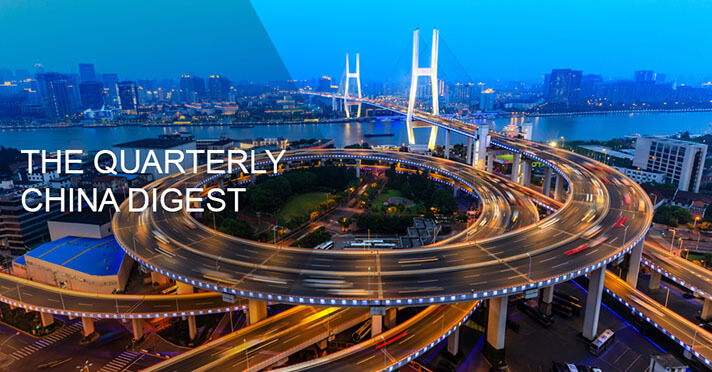On Monday, the Chinese government published the quarterly economic data for the third quarter of 2020. Following the first quarterly decrease of GDP in Q1 since the opening-up of the Chinese economy in 1978, and the V-shaped recovery in Q2, the figures regarding Q3 serve as an indicator whether China has been able to continue its path toward economic recovery and achieve positive economic growth for the year 2020.
Barring several localized outbreaks in the past quarter, the Chinese authorities appear to have halted the spread of COVID-19 in the country. In the meanwhile, the rest of the world continue to face the consequences of the COVID-19 outbreak, with a continuous rise of cases in the US and Europe currently in the midst of a second wave of infections.
The question is whether China has been able to continue to push forward its own recovery, despite the external headwinds of decreased economic activity and decreased demand from the rest of the world. Below we highlight the most important takeaways of the economic data which has just been released.
Year-to-date GDP Growth Shifted from Negative to Positive in Q3
In the third quarter, China’s economy saw a y-o-y increase in GDP of +4.9%. This is another improvement compared to the strong contraction of Q1 at -6.8%, and the expansion of +3.2% in Q2. Furthermore, the quarter-to-quarter GDP growth was +2.7%, which reflects a more moderate growth compared to the +11.5% q-o-q growth achieved in Q2.
The aggregate GDP change for the first nine months of 2020 was an expansion of +0.9%. This is a remarkable performance considering the heavy impact of the COVID-19 outbreak at the start of the year. According to IMF, China will be the only major economy to grow in 2020, with a forecasted GDP growth of +1.9% for the year, where the world’s GDP is forecast a decline of -4.4%.
However, both in real and nominal terms the Chinese economy has not recovered to 2019 levels of growth. A potential reason for this is the fact that the contribution of consumption to GDP growth was approximately half of regular Q3 levels, as evidence by the retail sales data highlighted below.
Imports and Exports See First expansion of the year
In the first nine months of 2020, the total aggregate value of imports and exports of goods expanded by +0.7% y-o-y. Particularly, in Q3, the total value of imports and exports of goods expanded by +7.5% y-o-y, a strong improvement compared to the -6.5% drop in Q1. What is more, by the end of September the value of exports had risen by +1.8% y-o-y, whereas the value of imports was down -0.6% y-o-y.
Employment Improved in Third Quarter
The surveyed unemployment rate in urban areas decreased to 5.4% in September, another -0.3% percent decrease compared to June. This means that unemployment situation is reverting back to similar levels when compared to the period prior to the outbreak, where unemployment in January was reported at 5.3%, before rising sharply to 6.2% in February.
In urban areas the number of newly employed staff for the first nine months of the year totaled 8.89 million people, 99.8% of the target set by the Chinese government for new employment in 2020. However, it must be noted that it still remains unclear how employment for migrant workers has developed, since migrant workers in China are largely unregistered.
Purchasing Managers’ Index (PMI) Remains in Expansionary Territory During Q3
The composite PMI output index for large enterprises is a weighted summation of the manufacturing output index and non-manufacturing business activity index. If the PMI index is 50 this indicates no change, whereas a number over 50 indicates improvement and a number below 50 suggests a decline.
After the Composite PMI for large enterprises reached 54.2 in June, it showed a slightly upward trend in July (54.1), August (54.5) and September (55.1). In line with the previous quarter, the higher PMI can mainly be attributed to the non-manufacturing PMI, which in turn can be explained by the heavy impact of COVID-19 on the services sector for the months of January and February. After moving above the 50 threshold in Q2 (54.5 in May and 55.7 in June), the composite PMI for SMEs hoovered around that level in Q3, falling to 54.5 in July, increasing back to 55.1 in August, before falling again to 54.5 in September.
First Positive Quarterly Growth of Retail Sales in Q3 for the Year
For the first time this year, retail sales showed positive y-o-y growth, growing by +0.9% in Q3. On a year-to-date basis, retail sales are still down -7.2% compared to the past year, however, the situation has been steadily improving after the strong y-o-y contraction of -19.0% in Q1 and minor recovery to a contraction of 11.4% in Q2 (y-o-y).
After 7 consecutive months of contraction (-1.1% in July), monthly retail sales finally moved back into expansionary territory again in Q3 (+0.5% in August and +3.3% in September). In line with the previous quarters, the main driver of growth has been online retail sales, which grew by +15.3% in the first nine months of this year.
Year-to-date Industrial Production Transitions to Growth as Well in Q3
The value added of industrial enterprises, also known as the industrial growth rate, expanded by +1.2% y-o-y in the first nine months of 2020. The industrial growth rate had contracted by -1.3% for the first half year (y-o-y). More specifically, in Q3 the industrial growth rate was +5.8% y-o-y, compared to an expansion of +4.4% y-o-y in Q2 and a contraction of -8.4% in Q1.



